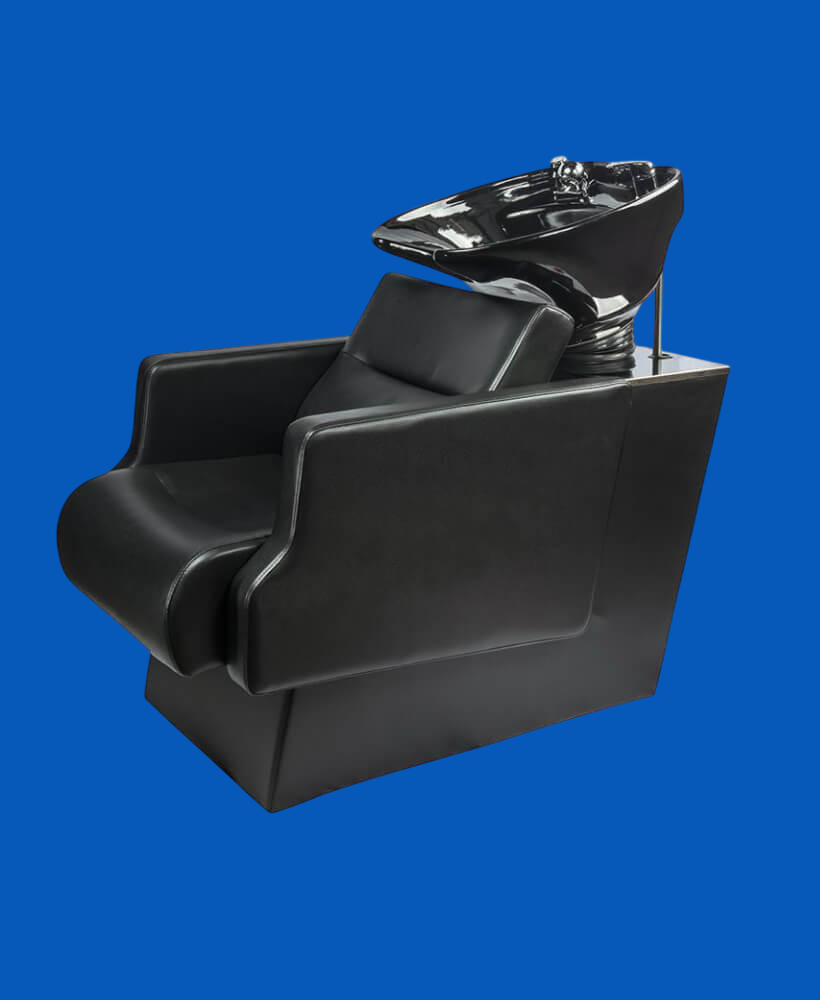
How to Keep Your Salon Shampoo Chairs Looking Like New
Share
In the competitive UK hair and beauty sector, the appearance of your salon is a direct reflection of your brand's quality and professionalism. With tight budgets and high client expectations, the cost of frequently replacing worn-out hairdressing furniture can be a significant and unwelcome expense. Protecting your investment in salon equipment is not just about aesthetics; it's a crucial part of smart business management. This guide provides authoritative, practical advice to help you maintain your shampoo chairs, ensuring they remain hygienic, comfortable, and visually appealing for years to come, ultimately safeguarding your capital and enhancing your clients' experience.
What is the best way to clean a shampoo chair in a UK salon?
Daily exposure to hair colour, chemicals, and moisture means your shampoo chairs require a consistent and correct cleaning regimen. Using the wrong techniques or products can prematurely degrade the vinyl, leading to cracking, peeling, and unsightly stains that can undermine the professional image of your UK salon or barbershop.
The cornerstone of effective maintenance is using the correct cleaning solutions. Harsh, abrasive, or alcohol-based cleaners should be avoided at all costs, as they strip the protective layers from the vinyl, leaving it dull and vulnerable. Instead, opt for pH-balanced, gentle cleaners specifically formulated for vinyl salon furniture. It is imperative to always check that any product used is safe for the material. After cleaning, a crucial and often overlooked step is to thoroughly dry the surface with a soft, absorbent microfibre cloth. This prevents hard water stains from forming, a common issue in areas with high mineral content in the water, and stops moisture from seeping into seams.
Selecting the Right Cleaning Products for Your Furniture
When evaluating cleaners, look for those that offer a dual action of cleaning and conditioning. A gentle, non-abrasive formula will effectively remove product build-up from shampoo, conditioner, and colourants without damaging the material. Conditioning agents within the cleaner help to keep the vinyl supple, preventing it from becoming brittle and cracking over time. This proactive approach to care maintains the material's integrity and appearance, extending the life of your beauty equipment significantly.
Establishing a Daily and Weekly Cleaning Routine
For a busy UK salon, a structured routine is essential. A quick wipe-down at the end of each day with an appropriate cleaner removes the daily accumulation of dust, hair, and product residue. This should be followed by a more thorough deep-clean weekly. This consistent routine prevents the build-up of stubborn deposits and allows you to regularly inspect the chair for any early signs of wear and tear, such as small cracks or loose components, enabling you to address issues before they become major problems.
How can you protect shampoo chairs from colour damage and wear?
Prevention is always more cost-effective than repair. Proactively protecting your chairs from the most common sources of damage will dramatically extend their lifespan and keep them looking new, directly impacting your salon business costs in the UK.
One of the most effective protective measures is the use of dedicated chair covers. Placing a cover over the back of your shampoo chair creates a vital barrier against potent hair colourants and bleaching agents. Investing in well-fitting, waterproof covers will spare your chair vinyl from permanent staining and chemical damage. Furthermore, it is wise to discourage staff from resting hot styling tools, such as straighteners or tongs, on any part of the chair, as this can cause immediate and irreversible burns or melting to the vinyl surface.
The Role of Chair Covers and Physical Barriers
A quality chair cover is a simple yet powerful tool. It acts as a sacrificial layer, taking the brunt of the chemical exposure and accidental spills. When a colouring service is complete, the cover can be removed and laundered, revealing a pristine chair underneath ready for the next client. This not only protects your investment but also contributes to a hygienic environment, as a fresh cover can be used for each client if desired.
Managing Moisture and Environmental Factors
Beyond chemicals, moisture is a primary adversary. In a humid salon environment, it's essential not to let water sit in the bowl of the chair or pool on the vinyl for extended periods. Ensure your team develops the habit of thoroughly drying the chair after every shampoo service. This simple practice prevents the growth of mould and mildew and protects the metal framework underneath from rust and corrosion, which is a key consideration for compliance with UK health and safety regulations in a commercial setting.
What maintenance checks should you perform on salon equipment?
Routine maintenance checks are as vital as cleaning. Proactive upkeep ensures the mechanical safety and functionality of your shampoo systems, preventing disruptive and costly breakdowns during peak trading hours.
A critical task is to periodically check and tighten the bolts and screws on your shampoo chair and its base. The constant reclining and upright movements, combined with daily use in a busy salon, can cause these fixtures to gradually loosen over time. It is recommended to schedule a monthly check using the appropriate tools to ensure all connections are secure. This not only prevents wobbling and instability but also avoids potential long-term damage to the threading or the chair's internal mechanisms.
Ensuring Structural Integrity and Client Safety
A loose shampoo chair is more than an inconvenience; it is a significant safety hazard. A wobbly base or a suddenly reclining chair can lead to client falls and injuries, potentially resulting in liability issues. In the UK, salon owners have a duty of care under the Health and Safety at Work etc. Act 1974 to ensure equipment is safe for use. Regular maintenance checks form a key part of your risk assessment and demonstrate due diligence, helping to keep both your clients and your business protected.
Scheduling Professional Servicing and PAT Testing
While daily and monthly checks are your responsibility, certain tasks require a professional touch. For electrically operated chairs, it is crucial to have them serviced according to the manufacturer's guidelines. Furthermore, any electrical components, such as hydraulic lifts or massage functions, must undergo annual Portable Appliance Testing (PAT testing for salons). This is a non-negotiable aspect of UK compliance, ensuring all electrical salon equipment is safe for use and properly documented for insurance and regulatory purposes.
Conclusion
For the discerning UK salon owner, maintaining your shampoo chairs is a direct investment in your business's professionalism, safety, and financial sustainability. By implementing a consistent routine of correct cleaning, proactive protection, and scheduled maintenance, you can significantly extend the operational life of your essential hairdressing furniture. This thoughtful approach not only enhances the client experience but also protects your capital, allowing you to focus on what you do best: delivering exceptional hair and beauty services.
